Flying Pelican: A Unique Predator of Nature
Flying Pelican: A Unique Predator of Nature
Introduction
The picture shows a pelican bird flying with its wings spread out, with huge ocean waves crashing behind it. The pelican bird is a special bird of prey adapted to the aquatic environment, which is easily recognizable by its long beak and spread wings. This picture is not just a picture of a bird, it highlights the beauty of nature, hunting techniques and diversity of the animal world.
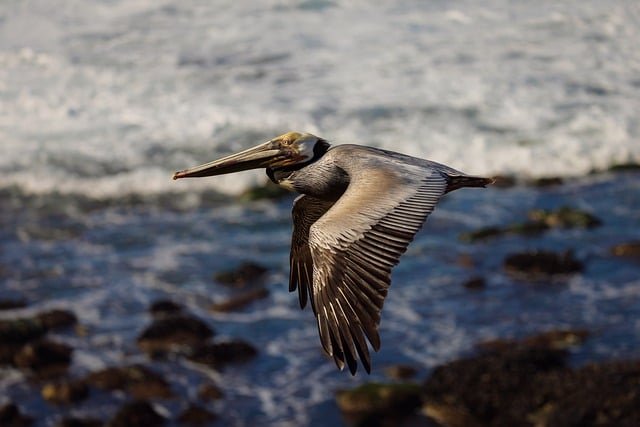
https://pixabay.com/photos/pelican-flight-flying-bird-9430027/
Introduction to the Pelican Bird
1. Physical Characteristics of Pelicans
- One of the most recognizable features of the pelican is its long beak, which helps it easily catch fish from the water.
- There is a bag-like hanging pouch on the lower part of its beak, which helps in collecting food and draining water.
- The wings of the pelican are quite wide and their flying style is majestic.
- The pelican is seen flying with its wings fully extended, which indicates its ability to move through the air.
- Their feathers are usually gray, white, and black, which varies by species.
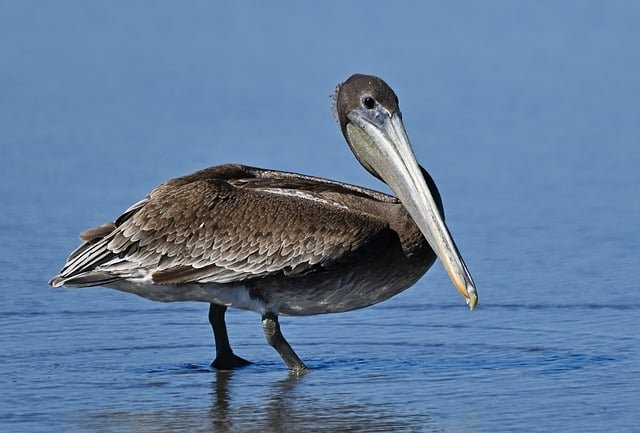
https://pixabay.com/photos/brown-pelican-pelican-bird-animal-8195516/
2. Pelican habitat and environment
- Pelicans usually live near coastal areas, rivers, lakes, and wetlands.
- The pelican in the picture is flying over the sea, which indicates that it may be a coastal pelican.
- Their main food is fish, which they hunt by flying over the water.
- Pelicans usually live in groups and also like to hunt together.
Pelican diet and hunting tactics
1. Prey capture method
- Pelicans use their long beaks to catch fish from the water.
- They often jump from the water or fly low when catching prey.
- The pouch under the beak expands with water and through it they collect fish.
- After draining the water, they swallow the fish.
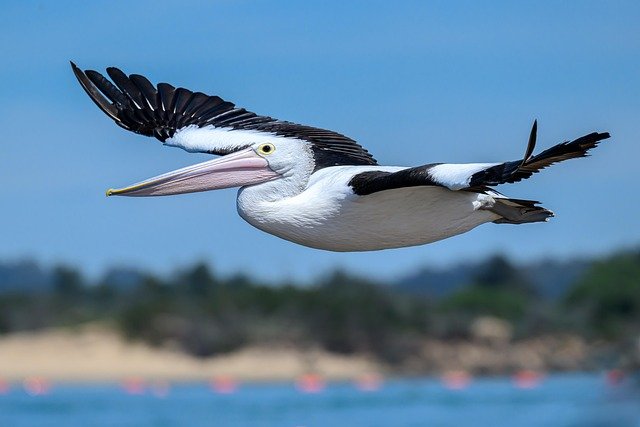
https://pixabay.com/photos/australian-pelican-pelican-bird-9268481/
2. Food list
- The main food of pelicans is small and medium-sized fish.
- They sometimes eat aquatic frogs, crabs and small marine animals.
- Group behavior is often observed in hunting, where a group of pelicans gather in a specific area to chase fish together and hunt.
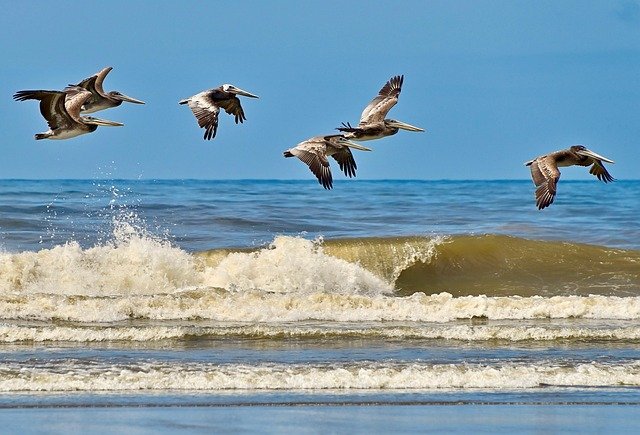
https://pixabay.com/photos/birds-brown-pelicans-wildlife-waves-8157789/
Ecological role of pelicans
1. Part of the marine and aquatic ecosystem
- Pelicans are an important member of the aquatic ecosystem, as they play a role in the food chain as predators.
- They help control the population of fish, which helps maintain the balance of the marine ecosystem.
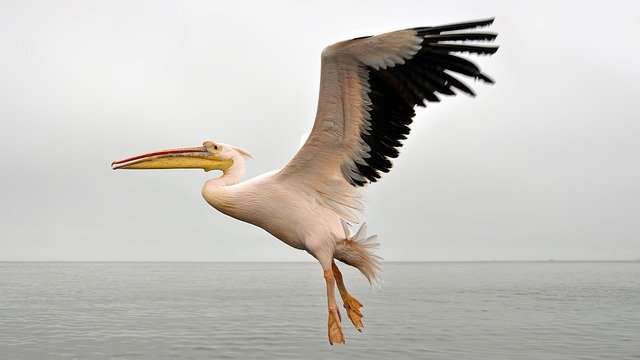
https://pixabay.com/photos/pelican-nature-sea-animal-bird-1170080/
2. Sensitivity to the environment
- Pelican populations may be declining due to environmental pollution, especially plastic and chemical waste.
- Climate change and fish shortages are affecting pelicans' food supply.
Lifestyle and reproduction of pelicans
1. Reproduction and nesting
- Pelicans usually build nests in tree branches or on sandy areas of the seashore.
- Female pelicans lay 2-3 eggs at a time and both parents take care of the eggs.
- The chicks are fed by their parents after they are born.
2. Social behavior
- Pelicans are highly social birds and prefer to live and hunt in groups.
- They nest and live together in groups, especially during the breeding season.
Pelican conservation and the future
1. Conservation measures
- Some pelican species are currently endangered, the main reason for which is environmental pollution and climate change.
- Various organizations are focusing on coastal area conservation and fisheries management to conserve pelicans.
2. The role of humans
- Humans can protect pelicans' habitats by conserving aquatic ecosystems and reducing pollution.
- Reducing plastic use and ensuring sustainable fisheries are important for the survival of pelicans.
Conclusion
This picture is not just a pelican flying, it is a wonderful example of nature's hunting techniques, ecological balance and biodiversity. The pelican's large beak, wide wings and ocean background remind us of the immense beauty and diversity of nature. Pelicans are not just birds, they are an integral part of our environment, which brings to the fore the need to preserve the biodiversity of our planet. 🦩🌊
| Community | My Blog |
|---|---|
| Category | General |
| Device | Honor |
| Caption | @saimunsp |
| Location | Bangladesh |
Upvoted! Thank you for supporting witness @jswit.